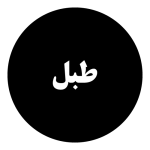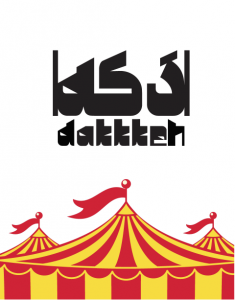First Season
Issue 04
Cold War – Literature and Publications (B)
February 2021
Content
– Nima and the Hostile Governments
Anoush Salehi
– A History of the Writers’ Association of Iran
Ahmad Karimi-Hakkak
– The Cold War in the Children’s and Young Adult’s Literature
Masoud Koohestani-Nejad
– The Voice of America Broadcasts
Seyed Farid Ghasemi
– Home to Home, Looking after a mirage
Mohammad Meftahi
– The Cold Critique
An interview with Mashiat Alaee
– A Review on My Uncle Napoleon
Nastaran Isazadeh
– A Review on the Historical and Linguistic Researches
Ehsan Shourabi
– The Origins and Evolution of Iranian studies
Alexey Khismatulin
– The Institution of Franklin Publications
An interview with Ali Sadr
Abstract
Tabl Magazine’s fourth issue, published in March 2021, following the third issue, studies the Cold War with a focus on the literature and publications. Through eight essays and two interviews, this issue tries to explore the Cold War’s influences on poetry, children and youth literature, novels, critiques, Iranian and linguistics studies, the history of the Writers’ Association of Iran, the Voice of America broadcasts, and the institution of Franklin Publications.
This issue includes two articles about poetry, one dealing with the ups and downs of Nima’s relationship with the politics and the culture of his time, and the other with the effects that Tudeh Party’s teachings might have had on the life and poetry of Mahmoud Musharraf Azad Tehrani (M. Azad).
Another topic covered in the issue is the History of the Writers’ Association of Iran since its inception until shortly before the Revolution. This study begins with the government’s attempt to establish the “Congress of Poets and Writers,” to align writers with its own policies, when the widespread censorship of literary works, had intensified. This article, “the History of the Writers’ Association of Iran,” describes the opposition of the writers to this event, where there is no freedom of expression and the exchange of ideas. It continues illustrating how the Iranian Writers’ Association was established. It came about in a meeting where a statement in opposition to the government’s arranged “Congress” was signed by 49 writers, including Al-e-Ahmad, Ashouri, Ebrahimi, Beyzai, Sepanlou. The signed statement also emphasized the need to abide by the Universal Declaration of Human Rights and the constitution of Iran. There is also a detailed exploration of challenges that the association encountered, its cultural achievements, its failure to achieve legal status following increased governmental pressure on its members and supporters, and the first stage of the cessation of its activities are described. The second part of the article describes how the Association was eventually given legal status, as well as its activities until October 1977.
As in the previous one, this issue examines the literature of children and youth during the Cold War with a focus on a time span of 1954 to 1978. An article titled “The Cold War in the Children’s and Youth Literature” describes a number of activities of the Iran-Soviet Society for Cultural Relations on the subjects like children’s education and entertainment, the importance of Sobhi Mohtadi in this context, and the transformations in the Soviet approach towards the literature of children and youth. These activities led to the publication of books in Persian by the Progress Publications in Moscow that were later distributed in Iran. On the other hand, the activities of the United States in publication and distribution of books, through the propaganda organizations connected to Truman’s Point Four program, publishing houses like Franklin, the Translation and Publishing Company, Gutenberg, and Nour-e Jahan Publications, and their impact on Iranian publishers of children’s books is not absent from this study. For a better understanding of the effectiveness of the books published by these institutions, the author examines the content of La Fontaine’s stories. Regarding achieving dominance in Iranian publications, this article concludes that the western institutions and organizations were the winner in the competition against eastern forces.
The next article confirms this conclusion by reviewing “Voice of America” broadcasts, which, at first, worked as a small-medium that included the monthly schedule of the Persian-language radio program “Voice of America,” and was later broadcasted by the Intelligence Agency of the US Embassy. Moreover, in an interview with Ali Sadr in the magazine, there is a discussion on the policies, programs, and implications of the Franklin Publishing Foundation, which was founded by the History Department of Princeton University.
An interview with Mashiat Alaee examines literary criticism during the Cold War. Alaee believes that the Cold War dates back to the wide-ranging military, political, and ideological rivalry of two opposing worldviews of the eastern and western blocs, namely socialism and capitalism, and began in 1917 with the establishment of socialism and its subsequent challenges of the capitalist world; a challenge that was also reflected in culture, literature, and critiques and continued until the late 1980s.
The role of criticism in this context is also discussed, covering subjects like the emergence of criticism in the works of Saeed Nafisi and Fatemeh Sayyah, the beginnings of Marxist criticism in the writings of Ehsan Tabari, and the radical criticisms of Al-e-Ahmad at the time of joining the Tudeh Party, as well as when he split from the Tudeh Party and joined the Third Force. Another subject of focus is the origins of literary criticism and the description of committed literature in Barahani’s works. Also discussed is the similarity of the works of Abdolali Dastgheib and Barahani, in terms of their belief in the commitment of the writer and the critic, followed by a review of the influence of Lukács and Plekhanov on Dastgheib, who considered formalism, linguistics, and stylistics to result in artificial and unrealistic literature, preferring to nakedly depict social reality instead.
In the same context of literary criticism, another article reinterprets the novel My Uncle Napoleon in the context of the Cold War, and examines works of art and literature in terms of prevailing national controversies, rather than international ones. This article studies a number of concepts that are addressed in this work of literature, such as conspiracy theories, living in constant and endless fear, exaggeration and the internalization of external fear, being proud of an imaginary past, and consequently, giving up on changing the present and the vicious cycle of repeated repression. The study is followed by mentioning other Iranian stories such as The Neighbors, The Day of Misfortune, and Dandil: Stories From Iranian Life, which are favorable examples of literary works that present the conflict between eastern and western blocs during the Cold War.
The issue ends with an examination of historical and linguistic researches, that were done as a result of the formation of scientific centers in St. Petersburg, and the beginning of Oriental Studies in the Russian Empire. The first part of this article reviews the origins of these institutions, including the Russian State Museum of Oriental Art, St. Petersburg School of Oriental Studies, Royal Public Library, Department of Oriental Languages at the Ministry of Foreign Affairs, and Hermitage Museum. The second part focuses on Iranian studies, during the 20th century, which was influenced by transformations in the academic environment of Leningrad during and after World War II, and the formation of the new Moscow School, which followed the old Leningrad School.
Another article refers to a number of 19th-century Russian scholars who paid particular attention to the ethnic-linguistic region of Iran, including Central Asia, Iran, Afghanistan, and to some extent India. It discusses their activities in Russia in manuscript descriptions, catalog publications, lithography, coin studies, text studies, Persian poetry, Islamic studies, lexicography, folklore, field research, as well as studying the history of Iran.
Tabl 004 Team
Publication Rights and Editor-in-chief: Hooyar Asadian
Guest Editor: Mahsa Tehrani
Advisors to the Editor-in-chief: Borzoo Forootan, Peyman Pourhosein, Mohammad Tolouei
Copy Editors: Masih Azarakhsh, Atiyeh Assarpour
Proofreader: Roya Kiani
Executive Manager: Yasaman Hajinabi
Executive Coordinator: Nasim Mousavi
Art Director: Peyman Pourhosein (StudioKargah)
Uniform Design: Siavash Tasaodian
Design and Layout: Safaeddin Emami
Print and Production: Studio Tabl
Print and Production Supervisor: Hossein Soltani
Printed by: Shahrivar
Special Thanks to: Farzan Asadian, Kiyan Forootan, Mona Janmohamadi, Arash Nasiri, Arash Sadeghbeigi

